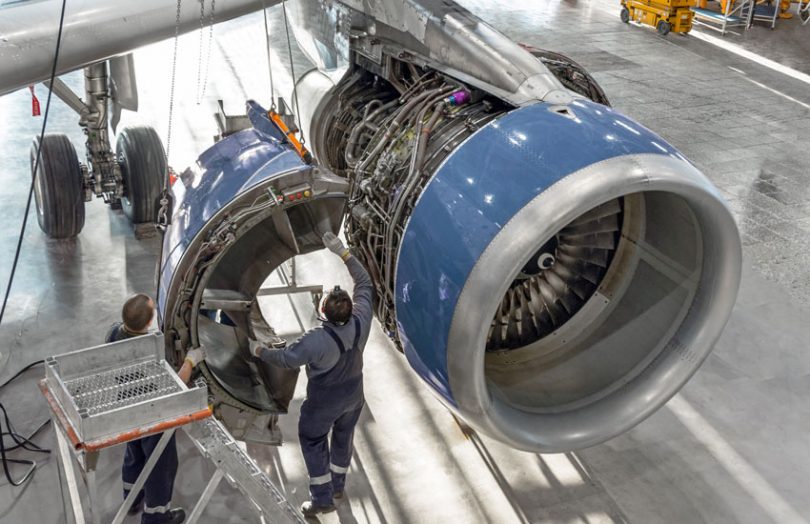Yesterday, SITA, along with key airline industry partners, launched the MRO Blockchain Alliance to track, trace and record aircraft parts. SITA is the technology company jointly owned by the airline industry.
The new consortium will cater to the Maintenance, Repair and Overhaul (MRO) of aircraft and hence parts. For its first project, the coalition will launch a blockchain proof of concept (PoC) to track and trace movement and maintenance history of parts. It will work with airlines, lessors, original equipment manufacturers (OEMs) such as engine producers, logistics suppliers, and maintenance providers for the PoC.
SITA said the groundwork for the alliance was first laid down at a HAECO Group event in 2019. Members include Bolloré Logistics, Cathay Pacific, FLYdocs, HAECO Group, Ramco Systems, SITA, and Willis Lease Finance Corporation, supported by Clyde & Co.
The aerospace industry has to function in a tight regulatory environment, which requires vetting of all parts used by any aircraft. These parts are resold several times, which makes it challenging to track their history. Additionally, counterfeit parts are making their way into the supply chain. Thus, airlines and other industry participants have to spend a significant amount of time and money to ensure the quality of the aircraft parts supply chain.
By leveraging blockchain, the alliance believes it could speed up the tracking process and enable secure sharing of data between stakeholders. PwC estimates blockchain could cut MRO costs globally by around 5% or $3.5 billion.
The alliance will use blockchain to record and track two different sets of information called a digital thread and a digital passport.
The digital thread will provide real-time status, a chain of custody, and maintenance records of the part over time. The digital passport will function as an identity of the aircraft part and hold data such as certifications and flight worthiness.
SITA said it plans to use blockchain to ensure all aircraft parts comply with the SPEC2000 and SPEC42 standards while guaranteeing a transparent view for regulators and other bodies.
“In an industry as interconnected as ours, the ability to share and record common data in a secure way without giving up control of that data is fundamental to driving new efficiencies in air travel. This is particularly true for the MRO sector,” said Matthys Serfontein, President of Air Travel Solutions for SITA.
The MRO Blockchain Alliance is currently in the planning phase and aims to launch the PoC in the second quarter of 2020. This alliance is a part of SITA’s Global Blockchain Alliance, a forum that evolved out of SITA’s Aviation Blockchain Sandbox.
Ledger Insights previously reported on Honeywell’s partnerships with iTRACE and SecureMarking. Honeywell has developed a blockchain system to combat counterfeit aerospace parts. It is using the solution for its GoDirect Trade aircraft parts e-commerce portal.
Two months ago, Air New Zealand trialed a blockchain platform from aircraft-parts maker Moog. It used blockchain and 3-D printing for a replacement part ordered by Air New Zealand for an in-air flight. The aircraft was fitted with part the moment it landed in Los Angeles.
Meanwhile, the U.S. Navy and the U.S. Air Force are working with blockchain firm SIMBA Chain for aircraft parts traceability. A few months ago, aircraft engine maker Rolls Royce said it is working with Singapore’s SIA Engineering and Block Aero for engine maintenance on the blockchain.
Accenture and Thales demonstrated one of the first blockchain projects for aircraft parts at an air show in the UK. The solution was able to track, trace and authenticate aircraft parts and materials.






